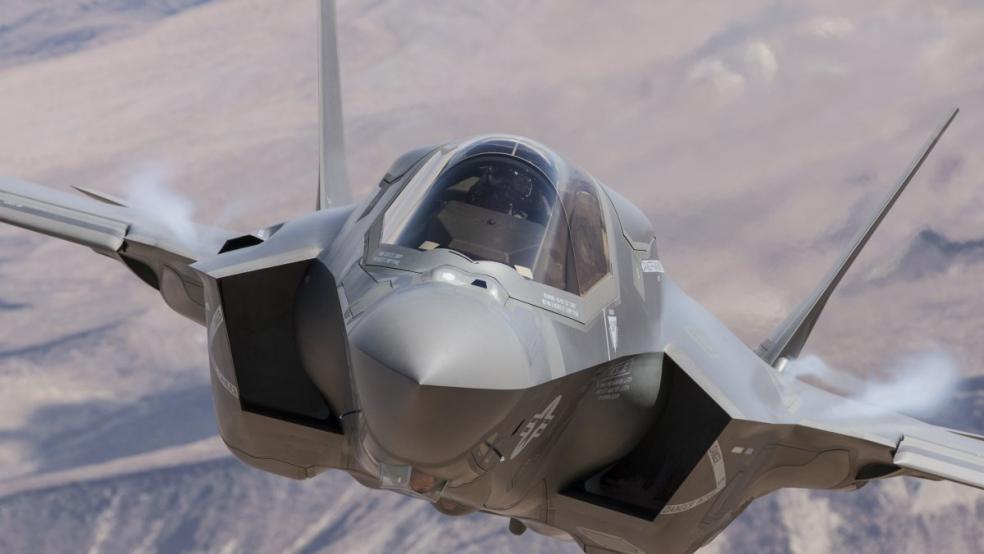The F-35 fighter plane, whose troubled road to deployment will cost taxpayers almost $400 billion, took another hit yesterday when the Defense Dept.’s Inspector General criticized the management and oversight of engine development by Pratt & Whitney.
That came hard on the heels of a General Accounting Office report last month that called the reliability of the engine for the F-35 Joint Strike Fighter “poor.”
Related Link: New Red Alert for Billions-Over-Budget F-35 Fighter
“Improving the F-35 engine reliability to achieve established goals will likely require more time and resources than originally planned," GAO auditors said.
How much more time and resources probably doesn’t really matter. After about 20 years of political battles, massive cost overruns, major missteps and almost a decade of delays, nobody – not the Pentagon, not the President, not the Congress – is going to cry uncle and stow the F-35s in secret hangars at Edwards Air Force Base in Nevada. That would mean having to tell the American public that buried alongside perhaps the most controversial program in the history of advanced weaponry will be billions of hard-earned dollars.
Citibank, Bank of America, JPMorgan Chase, Wells Fargo and other behemoths of the financial crisis were too big to fail. The F-35 has cost so much already that the program is too big to bail out of.
The price tag on this weapons system over its estimated 55-year life – originally said to be $1.1 trillion – is now pegged at $850 billion by Air Force Lt. General Christopher Bogdan, the officer with the thankless task of eventually getting three versions of the plane – one for the Air Force, one for the Navy and one for the Marines – safely airborne.
Last February, Bogan told David Martin of 60 Minutes: “I don't see any scenario where we're walking back away from this program.”
“So the American taxpayer is going to buy this airplane?” Martin asked.
“I would tell you we're going to buy a lot of these airplanes,” Bogdan said.
Related Link: General Defends Embattled $850 Billion F-35 Program
But there is another reason the F-35, built by Lockheed Martin, will survive. And it goes beyond the reluctance of generals and politicians to admit that the plane has been a spending sinkhole and a management disaster. The plane’s stealth and technological prowess hold the promise of air supremacy for America.
As Marine Lt. General Robert E. Schmidle Jr. told 60 Minutes: “I shouldn't get into the exact ranges because those ranges are classified, but what I can tell you is that the range at which you can detect the enemy as opposed to when he can detect you can be as much as 10 times further when you'll see him before he'll ever see you….”
Since the name of the game in aerial combat is detection, the military is never going to walk away from that kind of advantage no matter what the cost.
Top Reads from The Fiscal Times





